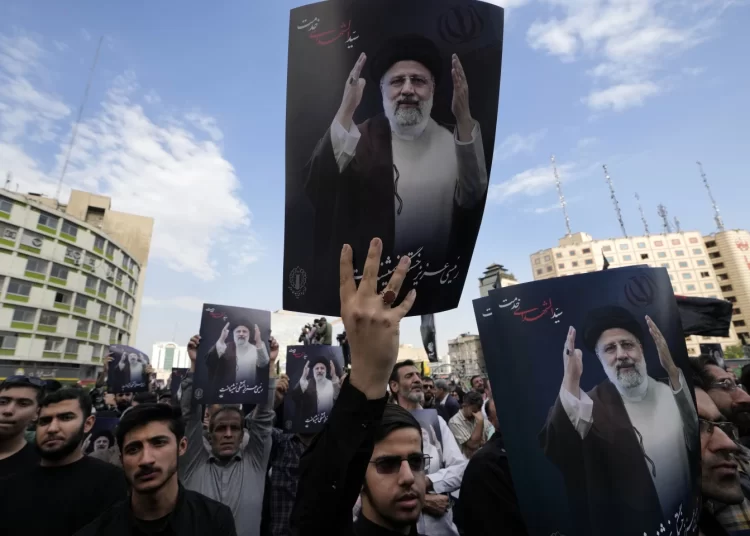Mourners in black began gathering Tuesday for days of funerals and processions for Iran’s late president, foreign minister and others killed in a helicopter crash, a government-led series of ceremonies aimed at both honoring the dead and projecting strength in an unsettled Middle East.
For Iran’s Shiطite theocracy, mass demonstrations have been crucial since millions thronged the streets of Tehran to welcome Grand Ayatollah Ruhollah Khomeini in 1979 during the Islamic Revolution. An estimated 1 million turned out in 2020 for processions for the late Revolutionary Guard Gen. Qassem Soleimani, who was slain in a US drone strike in Baghdad.
Whether President Ebrahim Raisi, Foreign Minister Hossein Amirabdollahian and others draw the same crowd remains in question, particularly as Raisi died in a helicopter crash, won his office in the lowest-turnout election in the country’s history and presided over sweeping crackdowns on all dissent. Prosecutors already have warned people over showing any public signs of celebrating his death and a heavy security force presence has been seen on the streets of Tehran since the crash.
But Raisi, 63, had been discussed as a possible successor for Iran’s supreme leader, the 85-year-old Ayatollah Ali Khamenei. His death now throws that selection into question, particularly as there is no heir-apparent cleric for the presidency ahead of planned June 28 elections.
“Raisi’s death comes at a moment when the Islamist regime is consolidated,” wrote Alex Vatanka, an Iran expert at the Middle East Institute. “In short, there will be no power vacuum in Tehran; nonetheless, post-Khamenei Iran suddenly looks far less predictable than it did just a few days ago.”
A procession Tuesday morning led by a semitruck carrying the caskets of the dead slowly moved through the narrow streets of downtown Tabriz, the closest major city near the site of the crash Sunday. Thousands in black slowly walked beside the coffins, some throwing flowers up to them as an emcee wept through a loudspeaker for men he described as martyrs.
The bodies will travel on to the holy Shiite seminary city of Qom before traveling to Tehran later Tuesday. On Wednesday, a funeral presided over by Khamenei will then turn into a procession as well. On Thursday, Raisi’s hometown of Birjand will see a procession, followed by a funeral and burial at the Imam Reza shrine in the holy city of Mashhad, the only imam of the Shiite’s faith buried in Iran.
That shrine has long been a center for pilgrims and sees millions visit each year. Over the centuries, its grounds have served as the final burial site for heroes in Persian history. It’s an incredibly high, rare honor in the faith. Iranian President Mohammad-Ali Rajai, the only other president to die in office when he was killed in a 1981 bombing, was buried in Tehran.
Iran’s theocracy declared five days of mourning, encouraging people to attend the public mourning sessions. Typically, government employees and schoolchildren attend such events en masse, while others take part out of patriotism, curiosity or to witness historic events.






Discussion about this post